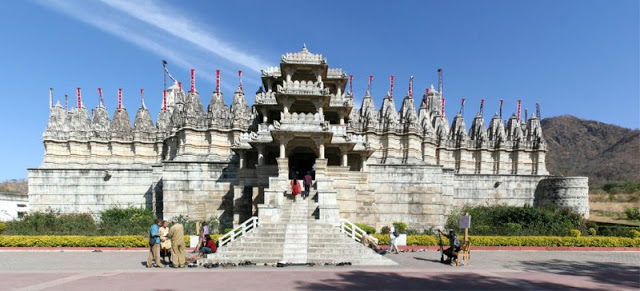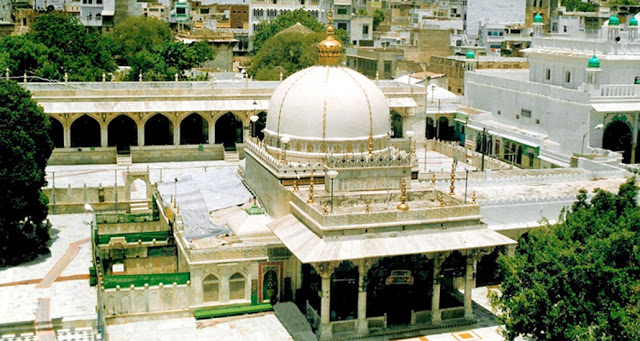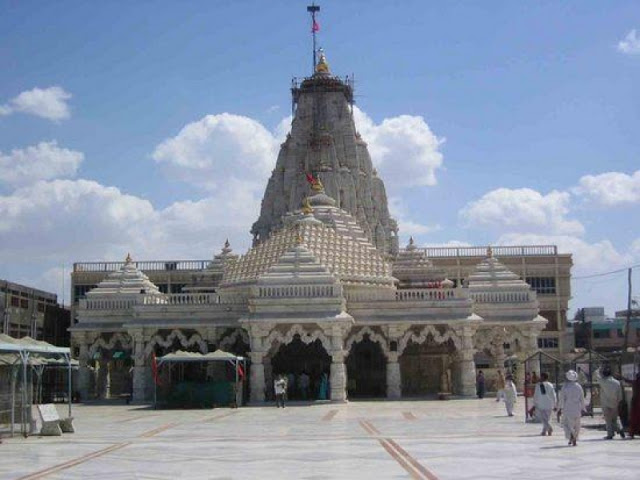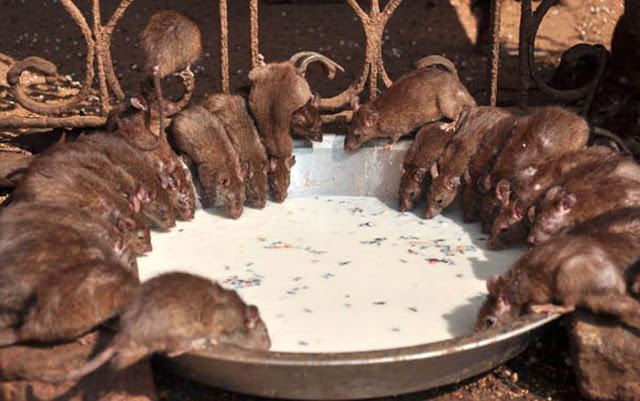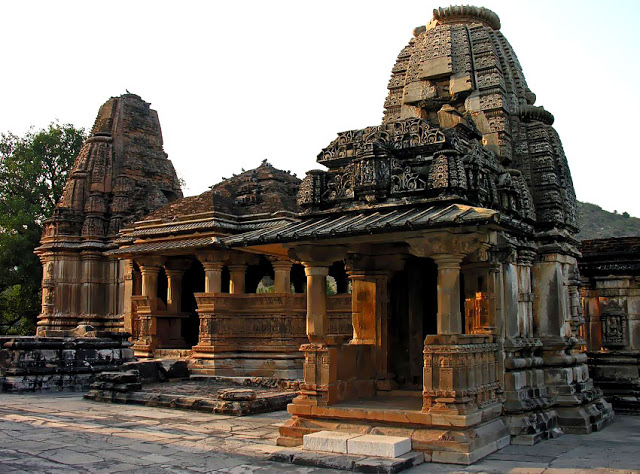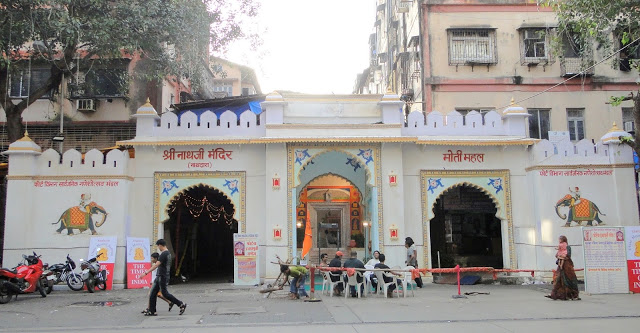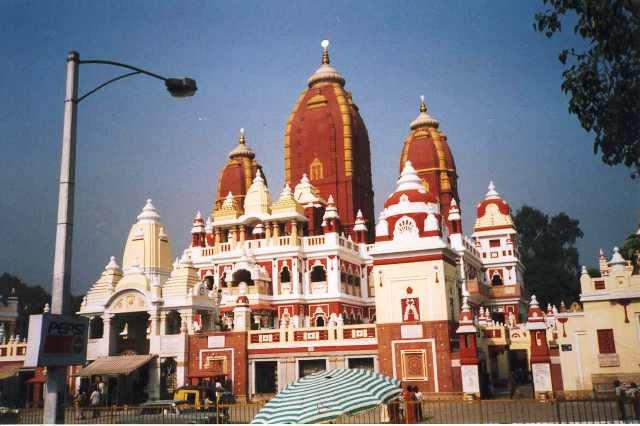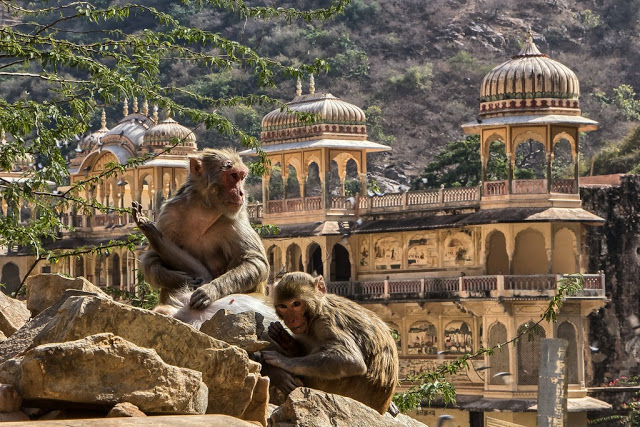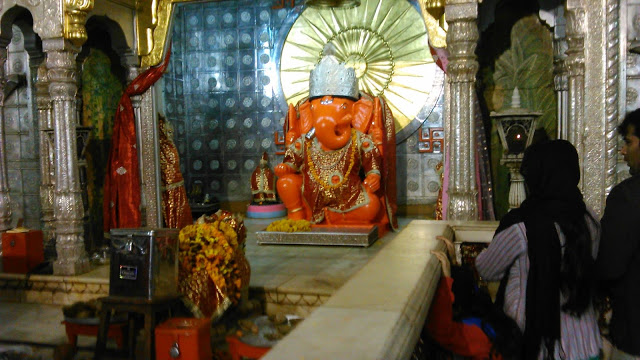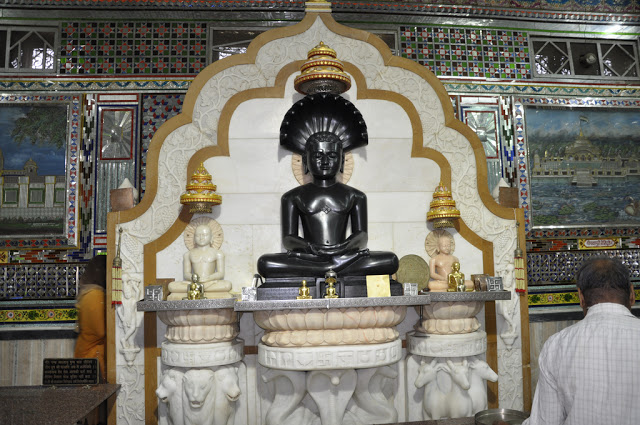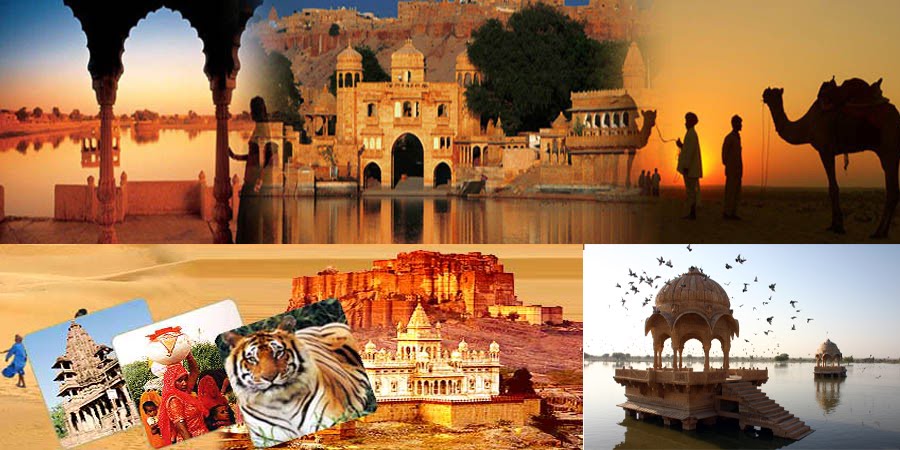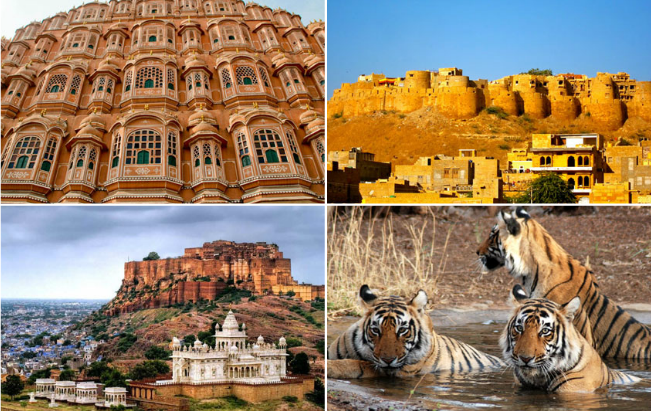India is a vast South Asian country with diverse terrain – from Himalayan peaks to Indian Ocean coastline – and history reaching back 5 millennia. In the north, Mughal Empire landmarks include Delhi’s Red Fort complex and massive Jama Masjid mosque, plus Agra’s iconic Taj Mahal mausoleum. Pilgrims bathe in the Ganges in Varanasi, and Rishikesh is a yoga centre and base for Himalayan trekking.
Here is Top Best Places To Visit In North India
Agra:
Wish to realize a dream vacation? Welcome to the amazing tourism city of the TajMahal - Agra, India. The seat of the great Mughal rulers for ages Agra, India offers its treasure trove for all the tourists from India and abroad. Even though Agra, India is synonymous with the Taj, the city stands in testimony to the great amount of architectural activity of the Mughals. TajMahal is the epitome of love, poem in white marble, one of the Seven Wonders of the World besides being the pride of India. In fact all the monuments of Agra, India have contributed to Agra Tourism. Terrific Agra Packages from us will ensure you plan your
Agra Travel soon. Delhi to Agra to Jaipur make the famous Golden Triangle tour of India.
History: History of Agra is amply evident from the numerous historical monuments in and around the city. Though the history of Agra city is linked with the Mughal dynasty, numerous other rulers also contributed to the rich history of Agra. Agra was founded by Sikandar Lodhi (Lodhi dynasty; Delhi Sultanate) in the 16th century. Babur (founder of the Mughal dynasty) also stayed for sometime in Agra and introduced the concept of square Persian-styled gardens here. Emperor Akbar built the Agra fort; Jahangir beautified it with palaces and gardens. Shahjahan marked the zenith of Mughal architecture, when he built the Taj. The post-Mughal era's history of Agra saw the rule of the Jats, Marathas and finally the British taking over the city.
Tourist Attractions:
Taj Mahal: -The most famous of the monuments of Agra, India is the TajMahal. TajMahal is a symbol of the devotion and dedication of love. TajMahal of Agra is a monument built by emperor Shah Jahan In the memory of her wife Mumtaz Mahal. TajMahal expresses the magnificence of Mughal architecture. The Taj has done wonders to Agra Tourism. Taj is a must in each one of the Agra packages offered by us. Agra to Jaipur is an interesting package option.
Agra Fort: -Besides the TajMahal amongst the other famous monuments of Agra, India is the Agra Fort. Agra fort was built by Emperor Akbar. He was undoubtedly the Greatest Mughal emperor of India. The construction of Agra fort commenced in the 1565 and completed in 1571. Built with red sandstone Agra Fort is a mixture of the Islamic and Hindu styles of architecture. Agra Tourism would be incomplete without this monument. Most of the Agra packages offered by us take you to the Agra Fort. Agra to Jaipur is the usual choice in pacakges.
Itmad-ud-Daulah's Tomb:-It is a tomb built with white marble in the typical Islamic style architecture. It was built by the Mughal Empress Noor Jahan in the memory of her father Itmad-ud-Daulah. It happens to be one of the must visit monuments of Agra. This monument of Agra is usually included in all the Agra packages. Travel from Agra to Jaipur is usually taken up by many tourists.
Akbar's Tomb: -The tomb of the great Mughal emperor Akbar is worth visiting. Akbar's tomb is a mixture of many architectural styles and completely different from earlier Mughal Buildings. Visit to this monuments of Agra is esential to make your Agra tour complete. Visit to this monument is generally a part of the Agra packages
Fatehpur Sikri: -Famously known as the city of Ghosts, it was built by the Great Mughal Emperor. Fatehpur Sikri is a place worth visiting to discover how once the city could have been which has now turned into ruins. many a Agra packages include a trip to Fatehpur Sikri also.
Here is Top Best Places To Visit In North India
Delhi:
The heart and soul of India-
New Delhi is a city with magnetic attraction. Every nook and corner of the city of Delhi seems like narrating the incidents of the bygone era. Delhi was a witness of every scar India has suffered from time-to-time. New Delhi has seen the struggle of the Indians to regain their freedom, New Delhi has felt the rays of rising sun on the first morning of freedom and now new Delhi stands proudly as a symbol of the strength, achievements and aspirations of we Indians. New Delhi should be your first tourism destination if you want to understand India & Indians deeply.
Tourist Attractions:
India Gate -A memorial in tribute to the soldiers martyred in the Afghan War, it has the names of all these heroic men inscribed on it. It is a riot of activity and adventures that teems with shrieking children, carefree tourists, and hawkers and vendors every day of the year.
Red Fort -Red Fort a fascinating building, built with red sandstones is an example of the rich Mughal architecture. Red Fort is a venue to the Independence Day parade of India.
Qutub Minar -The tallest monument in India, the Qutab Minar ushered in the new Indo-Islamic style of architecture, which was a fusion of the Indian and Mughal styles.
Connaught Place -Connaugt Place is the most happening place in New Delhi. It is the central business district of New Delhi. A shopper's paradise- Connaught place is one of the most famous shopping destinations of India. It houses some of the best restaurants, discos and hotels of the city.
Lotus Temple - Lotus Temple, a beautiful white marble building and a place of worship for Bahai's are two temples worth visiting for those in search of spiritual rejuvenation.
Varanasi:
Varanasi (also Benaras) is located in the north Indian state of Uttar Pradesh. Varanasi is situated along the west bank of the Ganges (also Ganga) and extends into a myriad collection of narrow lanes that form an integral part of it. The city winds itself around these vines of communication, stretching from one ghat to the other. Almost midway in its long journey from the slopes of the mighty Himalayas to the inflamed shore of Bay of Bengal, the muddy waters of the Ganges flow by a city that is five centuries older than Christ. The city finds mention in the great epics of Mahabharata and Ramayana. It was already an old city when Rome was founded, and was a flourishing center of trade when Buddha came to Sarnath, some 10 km away, to preach his first sermon in 500 BC. It is a city of temples and for more than 2,500 years, it has attracted pilgrims from near and far.
According to Hindu belief, Benaras or Varanasi as it is known, is the cosmic center of the Universe. The renowned American novelist Mark Twain once wrote, "Benaras is older than history, older than tradition, older even than legend and looks twice as old as all of them put together." Down the ages, Varanasi has stood as a symbol of Hindu renaissance. Swathed in an aura of history, religion, and tradition, Varanasi preserved the rituals and traditions of Hindu philosophy. From a time stretching beyond human memory, pilgrims from distant lands have come to Varanasi in search of divine blessings.
Tourist Attractions
The numerous ghats along the bank of the Ganges present a varied scene from dawn to dusk. A ghat is a series of well-paved steps that lead to the water. A ghat in Varanasi usually has small temples built into its side, while the larger structures, housing the powerful gods and goddesses from the Hindu pantheon, form a formidable backdrop to the serene beauty of the meandering river. These ghats numbering more than a hundred, with their entourage of temples, form the axis on which the city developed. For centuries, the Hindus considered it very auspicious to bathe at the ghats of Varanasi. Everyday at dawn thousands of pilgrims can be seen offering salutations to the Sun God in waist-deep water, secure in their conviction that the muddy waters of the Ganges will wash away all the accumulated sins of their life. The oil lamps (diyas) and flowers set afloat on the river at dusk make a fascinating sight.
There are five important ghats in Varanasi where the pilgrims flock to take a bath-the Assi, Dasawamedha, Barnasangam, Panchganga, and
Manikarnika. Each ghat has its own history and its own following. Many of the ghats were built and owned by the royal families of India; the Maharaja of Benaras built the Kali (or Sivala) Ghat, Maharaja Man Singh built the Mansarovar Ghat, while Ahilyabai Ghat is named after that legendary Queen Ahilyabai of Indore. The best time to visit the ghats is at the break of dawn, when pilgrims perform the Surya Pranam immersed waist deep in the waters of the holy Ganges.
The best way to catch the essence of Varanasi is to travel down the Ganges by boat at six o'clock in the morning. Boats can be hired by the hour from the main steps of the Dasawamedha Ghat. The steady creek of ancient oars, the slap of wet garments, incessant chatter of the bathers amid a tinkling of scattered temple bells, watching Varanasi from the environs of a gently swaying boat is truly an experience worth treasuring.
Although Varanasi is famous as a Hindu pilgrimage center, one cannot ignore its distinct Muslim heritage. The powerful Sultans of Delhi and later the emperors of the Mughal dynasty were instrumental in constructing several mosques, and this predominantly Hindu city gradually attained a degree of cosmopolitanism. Aurangzeb, the last of the mighty Mughals, hastened this process of evolution and the mosques that he built still stand today. The great mosque of Varanasi, Gyanvyapi Masjid, has minarets towering 71 m above the Ganges and is an integral part of the city's skyline.
There is also the Golden Temple, dedicated to Lord Shiva. The temple today sits across the road from its original site. The present temple was built in 1776 by Rani Ahilyabai, while three and a quarter ton of gold plating on the towers were provided by Maharaja Ranjit Singh of Lahore. Next to the temple is the Well of Knowledge, where, as legend goes, the original Shiva lingam lies hidden. There is another temple in this holy city-a temple dedicated not to the gods, but to Mother India. The
Bharat Mata temple, as it is known, does not have idols or images of gods and goddesses: what it has is a marble relief map of Independent India. The father of the nation, Mahatma Gandhi, inaugurated the temple.
Benaras Hindu University is the largest residential university in Asia, a center of Sanskrit, Indian art, culture, and music. This university covers an area of 2000 acres, and was gifted by the king of Varanasi, a scholar of Sanskrit and Hindu philosopher himself. The university is around 10 km from the railway station. Of the numerous temples that dot this ancient city, the important ones are the
Durga Temple,
Tulsi Manas Mandir, Vinayaka Temple, Annapurna Temple, Kal Bhairav, Jateshwar Mahadeo, and Maha Mritunjaya Temple.
Jaipur:
Jaipur is the capital of India’s Rajasthan state. It evokes the royal family that once ruled the region and that, in 1727, founded what is now called the Old City, or “Pink City” for its trademark building color. At the center of its stately street grid (notable in India) stands the opulent, colonnaded City Palace complex. With gardens, courtyards and museums, part of it is still a royal residence.
Across from the City Palace is Jantar Mantar, an open-air astronomical observatory from the early 18th century. Also nearby is the Hawa Mahal (Palace of the Winds), a former cloister for royal women fronted by a rippling 5-story screen of pink sandstone. Several kilometers outside the city center, elephants carry visitors uphill to the imposing Amer Fort, which features elaborate wall carvings and paintings. On the way to the fort, many visitors stop on the banks of Man Sagar Lake to photograph Jal Mahal, a partially submerged palace that famously reflects in the water.
Top Tourist Attraction in Jaipur
City palace :- The ‘City Palace’ is one of the most famous tourist attractions in Jaipur, located in the heart of the city. Dating back to the 19
th century, the palace was built by Maharaja Sawai Jai Singh
Jantar Mantar Observatory :- Jantar Mantar observatory has a specialized astronomical function.
Hawa Mahal “Palace Of wind “ :- built by Maharaja Sawai Pratap Singh for royal women to view the busy streets of Johari Bazaar, while staying veiled behind the jharokhas
Amber Fort :- The ‘Amer Fort’ is one of the most impressive forts of Rajasthan and is visited by an umpteen number of tourists every year. Overlooking the beautiful Maota Lake, the fort is a masterpiece of the Rajputana architecture.
Nahargarh Fort :- Nahargarh Fort, also known as Tiger Fort, is perched high on the rugged Aravali Hills overlooking Jaipur city.
Jai Garh Fort :- Jaigarh Fort was built in 1726 and holds great appeal for military lovers. Flanked by towering gateways and watchtowers, it contains the world's largest cannon on wheels.
Jal Mahal Palace :- The palace architecture boasts of a typical Rajput and Mughal style which is quite similar to that of Amer Fort. Made in red sandstone, the palace is actually five-storied where only the top story is visible (rest are submerged under water).
Albert Hall Museum :- This old and famous museum was modeled on the Victoria and Albert Museum in London. Its collection includes portraits of local kings, costumes, woodcarvings, paintings, and arts and crafts.
Birla Mandir :- Made of pure white marble, the temple walls adorn the carvings of the scenes of mythology and quotes from Gita. Main highlight of the temple is the images of Laxmi and Vishnu sculpted out of a single piece of marble
Galta Ghat “The Monkey Temple” :- The temple is part of a larger temple complex, which also has three sacred pools of water. One of the pools has been taken over by thousands of monkeys that congregate there to swim and bathe .
Amritsar:
Amritsar is home to the Religious Building important to Sikhs - The Golden Temple. Amritsar is an institution by itself. And the Golden Temple is the cradle of Amritsar with the city growing around it nurtured by its divine sanctity. Amritsar is one of the most sacred sikh religious sites in India.
Golden Temple Amritsar: The most important religious place for Sikhs and also the main attraction of the city. Legend has it that when Guru Ramdas heard about healing powers of Amrit Sarovar, he asked his son to build a temple at the site. The foundation was laid by Guru Ramdas and completed by Guru Arjan Dev Ji. The complex is open for 20 hours from 6 am to 2 am daily. People are expected to cover their head, wash their hands and legs before entering the temple. The intricate marble work in the temple and covering of it with gold was conducted by Maharaja Ranjit Singh.
Wagah Border Amritsar: Wagah border post, about 29 km from Amritsar on the Grand Trunk, has become famous for the ceremonial closing of gates and lowering of flags of India and Pakistan. Over 5000 people converge on the Indian side alone to watch the ceremony known as Beating the Retreat. Wagah is about 29 km from Amritsar in
Punjab province. As the Flag Code of India mandates that the national flag shall be flown only from sunrise to sunset, the tricolour is hoisted after sunrise and lowered at sunset. The martial ceremony of lowering the flag has been turned into an entertainment at Wagah. It is a highly stylized patriotic aggression on display that is hard to miss and is carried out with great ceremonial pomp and energy.
The BSF and Pakistan Rangers compete to kick higher, march harder and shout for longer duration in a bid to outdo each other. Guards using their bodies rather than their weapons lay on display carefully choreographed contempt. It is a masterly demonstration of how angry you can get without hitting anyone. The flag lowering ceremony, traditionally, has been a display of mutual hatred by BSF and Pakistan Rangers. Even though the whole routine is choreographed and agreed to by India and Pakistan, the ceremony has often been a cause of contention between both the countries. Guards who participate in the drill are carefully chosen on the basis of height, imposing stature, etc., besides their ability to perform the drill to perfection. Even though more aggressive elements of the routine have been toned down, the ostentatious and theatrical hostility is electrifying. It has become a tradition for people from both sides to converge at the border post to watch the ceremony. The crowd on Indian side is heavy on long weekends and public holidays. India and Pakistan have constructed stands to enable their citizens to watch the spectacle with comfort.
With the numbers increasing, Indian government plans to develop Wagah as a tourist destination. The ceremony lasts for around 45 minutes and is over just before the sunset. The time of the flag lowering ceremony changes depending on the season. Generally, it starts at around 4.15 pm during winter and at around 4:45 pm during summer. Seating arrangements have been made to enable spectators to watch the spectacle comfortably. Seats have been reserved exclusively for women. In the general seating only men are allowed as it tends to get very crowded and congested. VIP seating which is closest to the gates requires special pass.
Jallianwala Bagh Amritsar: Jallianwala Bagh is infamous as the site of one of the most monstrous massacres in human history and a dark event during the Indian independence struggle. Also known as Amritsar massacre, as many as 1100 peaceful protesters were killed when British troops opened fire on April 13, 1919. The brutal murder of thousands added fuel to the fight against the British and raised severe questions about the British intentions to rule India in a humane way. Today, the park has been converted into a memorial who sacrificed their lives.
Maharaja Ranjit Singh Museum Amritsar: Maharaja Ranjit Singh Museum offers insights into the life of the Sikh monarch and is housed in his erstwhile summer palace. The museum displays objects connected to the Maharaja such as paintings, armour, coins and manuscripts. The Parwana by Maharaja Ranjit Singh to Raja of Kapurthala is one of the major attractions of the Museum.
Central Sikh Museum Amritsar: Central Sikh Museum displays the gruesome history of the Sikhs martyred by the Mughals, the British and Operation Bluestar. It was established in 1958 and is home to paintings of Sikh gurus, saints, warriors and prominent leaders. It has has a rich collection of coins, arms, ancient manuscripts and also has an excellent library.
Akal Takht Amritsar: Built on a raised platform by Guru Hargobind to defy the edicts of Emperor Jehangir. Jehangir declared that nobody except the emperor shall occupy a throne of more than three ft; Guru Hargobind built Akal Takht on a platform of 12 ft. However, Akal Takht is built lower than Harmandir Sahib as a mark of respect. Akal Takht, the supreme seat of the Sikhs bore the brunt of the attacks during Operation Blue Star in 1984. However, with donations collected from devotees, it was reconstructed. Ghanta Ghar, the main entrance with the Victorian Clock on top, the Adh-Sath Tirath or the shrine of the 68 holy places, Darshani Deorhi are other important sites inside the complex.
Here is Top Best Places To Visit In North India
Udaipur:
Udaipur, formerly the capital of the Mewar Kingdom, is a city in the western Indian state of Rajasthan. Founded by Maharana Udai Singh II in 1559, it’s set around a series of artificial lakes and is known for its lavish royal residences. City Palace, overlooking Lake Pichola, is a monumental complex of 11 palaces, courtyards and gardens, famed for its intricate peacock mosaics.
Lake Pichola boat tours take visitors past the 18th-century, white-marble Lake Palace, which covers an entire island and is now a hotel. Another island contains the domed Jagmandir Palace, former summer resort of the Maharanas, mostly constructed in the 17th century. Elsewhere, in Udaipur’s sprawling old city, is towering Jagdish Temple, completed in 1651 and dedicated to the Hindu god Vishnu. The Bhartiya Lok Kala Museum of regional folk art is known for its traditional puppet shows, while the hilltop Monsoon Palace offers sweeping views of the city and the surrounding ridges.
Top Most Attractions in Udaipur
City Palace :- The City Palace stands tall over Pichola Lake, having served as an abode for the ruling royalty. Construction was begun by Maharana Udai Singh and was continued by successive Maharanas who incorporated several palaces and structures to the complex. Interestingly, each addition preserved the original style of the design. Visitors enter the palace through Bari Pol (the Big Gate) which leads one to Tripolia (the Triple Gate) where it was once a custom to distribute the Maharaja’s weight in gold and silver to his subjects. It now serves as the main ticket office. The palace has numerous balconies, cupolas and towers that overlook Pichola Lake. The structure is just as beautiful inside as it is spectacular from the outside. Each palace is designed in a unique way, and decorations like mirrored tiles, paintings, glass work and ornamental tiles bring to life the opulence of the era. Today, the main section of the palace has been converted into a museum that houses a large collection of artifacts.
Lake Pichola :- Pichola Lake is one of the most beautiful and picturesque lakes of Rajasthan, India. Located in the heart of the city, Pichola Lake is the oldest and one of the largest lakes of Udaipur. In 1362, the beautiful lake was built by Pichhu Banjara during the ruling period of Maharana Lakha. Talking about the dimensions of Pichhola Lake, it is extended to 3 miles in length, 2 miles in width and has depth of 30 feet. The beauty of this lake has not separated anyone to attract towards it. The lake looks more enchanting with its scenic surroundings. Maharana Udai Singh must have been certainly captivated by the charm of this pristine lake with the perfect backdrop of lush green hills as when he founded the city of Udaipur, he enlarged this lake. He also constructed a dam made in stone that falls under the 'Badipol' region on the shore of this lake.
Fateh Sagar Lake :- Fateh Sagar Lake is an artificial lake in Udaipur and one of the four beautiful lakes in the city. Constructed in 1678, the lake comprises three small islands and is surrounded by scenic views of the mighty Aravalli Mountains. One of the islands has been converted into a public park called Nehru Park, which is a popular picnic spot and has a striking water jet fountain. The Udaipur Solar Observatory is also situated on one of the islands in the Lake.
Jagdish Temple :- Jagdish Temple is a large Hindu temple in the middle of Udaipur in Rajasthan. Jagdish Temple is one of the tourist attraction in Udaipur. It is a major monument in Udaipur, built by Maharana Jagat Singh Ist in 1651. The Jagdish Temple is raised on a tall terrace. The temple was originally called the temple of Jagannath Rai but is now called Jagdish ji. This temple is a great example of architecture and art. The area is the main tourist place in the Udaipur city.
Jag mandir :- Jag Mandir is a palace built on an island in the Lake Pichola. It is also called the "Lake Garden Palace". The palace is located in Udaipur city in the Indian state of Rajasthan. Its construction is credited to three Maharanas of the Sisodia Rajputs of Mewar kingdom. The construction of the palace was started in 1551 by Maharana Amar Singh, continued by Maharana Karan Singh (1620–1628) and finally completed by Maharana Jagat Singh I (1628–1652). It is named as "Jagat Mandir" in honour of the last named Maharana Jagat Singh. The royal family used the palace as a summer resort and pleasure palace for holding parties. The palace served as a refuge to asylum seekers on two separate occasions..
Saheliyo Ki Bari :- Saheliyon Ki Bari, one of the most beautiful and popular destinations of Udaipur is located on the banks of Fateh Sagar Lake. Apart from scenic beauty the garden also possesses a museum, of which the main attraction are some stuffed cobras. After few years, Maharana Bhopal Singh imported some fountains from England and built a pavilion of rain fountains in 1889. One can also see some of the cenotaphs made of marbles inside the garden. The terraces of these cenotaphs have water fountains shaped like birds from whose beaks water gushes out in thin sprays like the singing rain – producing a wonderful sight. All these things make Sahelion ki Bari an interesting place to visit. During the reign of Maharana Fateh Singh, the flood occurred in Fateh Sagar lake and damaged some part of the Sahelion ki Bari but king reconstructed it to give the present form.
Shilpgram : - Shilpgram is a rural arts and crafts complex, situated 3 km (1.9 mi) west of the city of Udaipur, India. The center is spread over an undulating terrain of about 70 acres of land, surrounded by the Aravali mountains. Shilpgram is an ethnographic museum that depicts the lifestyles of the folk and tribal people of the region. With an objective of increasing awareness and knowledge about the rural arts and crafts, the Shilpgram provides opportunity to rural and urban artists to come together and interact through the process of camps and workshops.
Gulab Bagh & Zoo :- Conceptualized and built by Maharana Sajjan Singh, Gulab Bagh is also known as Sajjan Niwas Garden. The garden covers an area of about 100 acres and has a large variety of well maintained roses. Named after the gulab (roses) that grow here, Gulab Bagh is located on the banks of the famous Pichola Lake. The main attraction of Gulab Bagh are the roses in the garden. There are several varieties of roses found here including some from foreign lands.
Zoo – While the zoo is not a huge, it does house several interesting animals. The chinkaras, the female leopard and the tigers are a must see. The bird section of the zoo showcases some very unique parakeets and huge owls too.
Bhartiya lok Kala mandal :- Bhartiya lok Kala mandal was founded by Padma Shri devi lal samar in 1952. The main objective of the Institute is to conduct studies on the folk art, songs and festivals of regions like Rajasthan, Gujarat, Madhya Pradesh etc and to revive a vanishing folk culture. The institute has a puppet unit that trains children, teachers and other artists in the art of puppetry, as this is a very powerful non-conventional educative medium. It also boasts of regular performances that are a feast to behold. A group of 25 artists go on tour, both within India and abroad with a repertoire of puppet-shows and various folk dances. Their performances have brought the Institute a number of honours on a national and international level.
Maharana Pratap Memorial :- Maharana Pratap Memorial is a historic site that is dedicated to the gallant Maharana Pratap. Situated at the top of Moti Margi or Pearl Hill, the memorial overlooks the Fateh Sagar Lake. In Hindi, memorial is known as "smarak" and smarak is always made in the memory of loved ones. Maharana Pratap Memorial was constructed with the initiative taken by Maharana Bhagwat Singh Mewar with the help of a public trust.
The memorial comprises a life-sized bronze statue of Maharana Pratap balanced on his loyal and favorite horse, Chetak. It is believed that Chetak was a faithful horse. He was extremely protective towards Maharana Pratap and stood by his master till his last breath. Chetak was killed in the battle of Haldighati. People visit this memorial to pay their homage to the Rajput hero, Rana Pratap and his loyal mount 'Chetak'. This outstanding statue has also been picturised for various Bollywood movies. If you are a photographer, then you will truly love this place. From the comfortable height of the hill, you can click some of the best pictures of Udaipur city. One can also visit the attractive Japanese Rock Garden and the remnants of one of the forts of Udaipur, which are located near this hill.
Here is Top Best Places To Visit In North India
Jaisalmer:
Jaisalmer is a former medieval trading center and a princely state in the western Indian state of Rajasthan, in the heart of the Thar Desert. Known as the "Golden City," it's distinguished by its yellow sandstone architecture. Dominating the skyline is Jaisalmer Fort, a sprawling hilltop citadel buttressed by 99 bastions. Behind its massive walls stand the ornate Maharaja's Palace and intricately carved Jain temples.
Narrow alleys connect the fort's many shops, restaurants and hotels. Dotting the town below are a number of "havelis," or traditional Rajasthani mansions. The Patwon Ki Haveli is a notable example, adorned with carved balconies and arches. The Desert Culture Centre contains historic Rajasthani relics, while the Thar Heritage Museum focuses more generally on the region's history. Gadsisar Lake is surrounded by small temples and the Folklore Museum, a trove of local arts and crafts. The city is also a hub for scenic camel safaris through the nearby sand dunes.
Top Most Attractions in Jaisalmer.
Jaisalmer Fort - Golden Fort of Rajasthan:- Jaisalmer Fort locally known as Sonar Quila is one of the largest forts in the world located in Jaisalmer city in Rajasthan, India. It was built in 1156 AD by the Bhati Rajput ruler Rao Jaisal, from where it originates its name. This fort is popularly known as the 'Sone Ka Quila (Golden Fort)' by the local people and is one of the most magnificent monuments in the city of Jaisalmer. The fort is standing proudly in the middle of the unending golden sands of Thar Desert, Jaisalmer fort is one of the most prominent tourist attractions of Jaisalmer.
Bada Bagh :- Bada Bagh, which literally means 'Big Garden', is located on the Ramgarh road. It was commissioned by Maharawal Jait Singh in the early 16th century and completed by his son Lunakaran after his death. The site has three different things to watch, a garden, a tank and a dam. In the vicinity itself you will find Govardhan Stambh (pillar). This pillar was constructed to commemorate the construction of the Dam and the tank. In the local dialect the Dam and the tank are known as Jait Bandh and the Jait Sar respectively. It is believed that these are based on the name of the man who constructed them. The Jait Bandh is a dominating structure. It is about 1,200 feet in length and 350 feet in width. If you observe it closely you will notice that this has been built out of solid blocks of stone. The same material has been used for the construction of well as well as the tank.
Desert National Park : - The Desert National Park is a protected sanctuary. The park is considered not only the largest in the state of Rajasthan but among the largest in India. The catchments area of the Desert National Park is around 3100 sq. km. The desert is a harsh place to sustain life and thus most of the fauna and flora live on the edge. Nevertheless this place attracts large hoard of migratory birds due to its close proximity to Bharatpur. The great Indian Bustard is a magnificent bird and can be seen in considerably good numbers. It migrates locally in different seasons. The region is a heaven for migratory and resident birds of the desert. One can see many Eagles, Harriers, Falcons, Buzzards, Kestrel and Vultures. Short- toed Eagles, Tawny Eagles, Spotted Eagles, Laager Falcons and Kestrels are the most common among these. The substantial part of the park is on a landscape, which comprises of lakebed of extinct salt lakes and thorny scrubs. It is a wonder in itself that how come living organisms flourish in these harsh conditions. Similarly, a considerable area of the Desert National Park consists of sand dunes. If you really want to explore the magnificent wildlife at the Desert National Park in Jaisalmer then the best way is by setting out on an adventure-filled jeep safari. And yes, don't forget to carry a really good pair of binoculars and any of Ultra Zoom SLR cameras.
Kuldhara :- Kuldhara is an abandoned village in the Jaisalmer district of Rajasthan, India. Established around 13th century, it was once a prosperous village inhabited by Paliwal Brahmins. It was abandoned by the early 19th century for unknown reasons, possibly because of dwindling water supply, or as a local legend claims, because of persecution by the Jaisalmer State's minister Salim Singh. Gradually, it acquired reputation as a haunted site, and the Rajasthan State Government decided to develop it as a tourist spot.
Patwon Ki Haveli :- The Patwon Ji ki Haveli is an interesting piece of Architecture and is the most important among the havelis in Jaisalmer. This is precisely because of two things, first that it was the first haveli erected in Jaisalmer and second, that it is not a single haveli but a cluster of 5 small havelis. The first among these havelis was commissioned and constructed in the year 1805 by Guman Chand Patwa and is the biggest and the most ostentatious. It is believed that Patwa was a rich man and was a renowned trader of his time. He could afford and thus ordered the construction of separate stories for each of his 5 sons. These were completed in the span of 50 years. All five houses were constructed in the first 60 years of the 19th century.
Salim Singh ki haveli :- Salim Singh ki haveli has been built on the remains of an older haveli built in the late 17th century. The new building was built in the year 1815 and was occupied by the Mehta family of Jaisalmer. They were the most influential family of their time. This haveli was commissioned by Salim Singh, the then Prime Minister of the kingdom when Jaisalmer was the capital. The haveli has a distinct architecture. The roof has been constructed in the form of Peacock. The haveli is situated beside the hills near the Jaisalmer Fort. People claim that Salim Singh made two additional floors in order to make it as high as the fort but the Maharaja did not take this attempt in good spirit. He ordered the extra floors to be torn down. Nevertheless we do not find enough evidence to corroborate the story.
Amar Sagar Lake : - Amar Sagar is a small and beautiful lake cum Oasis and is adjacent to a 17th Century palace called the Amar Singh Palace. Maharawal Akhai Singh built this palace in honor of one of his predecessors Amar Singh. Next to the palace are pavilions with a large stairs leading down to the Amar Sagar Lake. This haveli has been constructed in the pattern of apartments. The Amar Sagar is a five story high haveli and is famous for its murals. Wherever you go in this haveli, you will notice beautiful murals painted with delicate efforts. You can find many of wells and ponds in the surrounding which have a royal air about them. There is an old Shiva temple in the complex itself. Amar Singh built this because he was supposed to be an ardent follower of Lord Shiva, a Hindu God related to destruction.
Tanot mata Temple :- The story of Tanot Temple at the Longewala border in Rajasthan is one such miraculous tale when the local deity Tanot aka Awad Mata didn't let any Pakistani tank bomb explode and Indian soldiers who were certain of martydom and defeat went on to crush the Pakistanis in both 1965 as well as 1971 wars. The legend say that in both wars more than 3,000 bombs were dropped either in the vicinity or while of the temple, but none exploded. And one can see some of those bombs in the Museum built by BSF inside the temple premises. Situated 150 Kms from the city Jaisalmer in Western most point of Rajasthan, Tanot has become one of most visited tourist spots especially for those who love the wilderness of Rajasthan and admire stories related to army heroics.
Tilon Ki pol :- This 14th-century gateway, which straddles the road down to Gadi Sagar, is said to have been built by a famous prostitute. When she offered to pay to have it constructed, the maharawal refused permission on the grounds that he would have to pass under it to go down to the tank, which would be beneath his dignity. While he was away, she built the gate anyway, adding a Krishna temple on top so the king could not tear it down.
Here is Top Best Places To Visit In North India
Leh Ladakh:
Leh Ladakh can be a great experience as these places have a lot of natural beauty. There are a number of attractions in Leh Ladakh that are filled with extreme pristine beauty, the list is inclusive of well- known ancient monasteries, other religious sites, palaces of the royalty, various gompas, mountain peaks, wildlife safaris, adventure activity spots and much more. Ladakh with a unique characteristic that is a blend of Indian, Tibetan as well as Buddhism linings make it a place which is worth paying a visit to.
This beautiful hilly region, every year, is visited by a large number of local as well as foreign tourists. It is both a popular summer as well as a winter holiday destination. Its untouched beauty, snow-clad mountain peaks, lush greenery and secluded spots attract a lot of honeymooners too. That is not all. With the range of adventure activities that it has to offer such as trekking, mountain biking, rafting, mountaineering and so on, it is well-known amidst adventure enthusiasts too.
Beautiful destinations such as Nubra valley in Ladakh by crossing world highest motorable pass called Khardungl apass, Pangong Tso Lake in Ladakh, Tso Moriri Lake in the south west of Ladakh and Tso Kar lake which is close to Manali Leh highway. Following in the west of Leh towards Kargil Srinagar highway by following river Indus you can explore Alchi monastery, Likir Monastery, Basgo Monastery, Lamayuru monastery, Fatu lapass and mulbekh. Da Hanu villages considered as a pure Aryan race tribe is one of the quest to be explored.
Land of beautiful monasteries such as Shey palace and monastery, Thikse monastery, Hemis monastery, Chimre gompa, Diskit monastery in Nubra valley, Samastaling monastery in Nubra valley, Tak Tak Gompa, Leh Palace, Stok palace are within the reach and some of the major attraction in Leh ladakh region.
welcome you to visit this beautiful part of India. Geographically surrounded by Tibet Border in North to South east and Pakistan border in North west and Kashmir valley in the west section of Leh. Down south section of Ladakh called Zanskar range which is the North section of Himachal Pradesh. Connected by air from Delhi to Leh regular flights and national highway from Manali to Leh and Srinagar to Leh. Though both highway may be close in winter season due to heavy snow fall at high passes. Ladakh is a dream destination for Nature Lovers, photography tours, adventure activities such as Manali to Leh jeep safari and Manali to Leh Bike Tours by following Rohtang Pass, Keylong, Baralacha Pass, Namkeela Pass and world second highest pass called Tanglangla pass.
Driving from west to east you can avail Srinagar to Leh jeep safari by covering a distance of nearly 475 kms,
trekking in Ladakh,
river rafting in Zanskar and Indus river, Mountaineering at Stok kangri peak and Kangyartse Peak, bike safari in Ladakh, mountain bike safari in Leh Ladakh, are various activities can full fill your travel requirements.
Here is Top Best Places To Visit In North India

